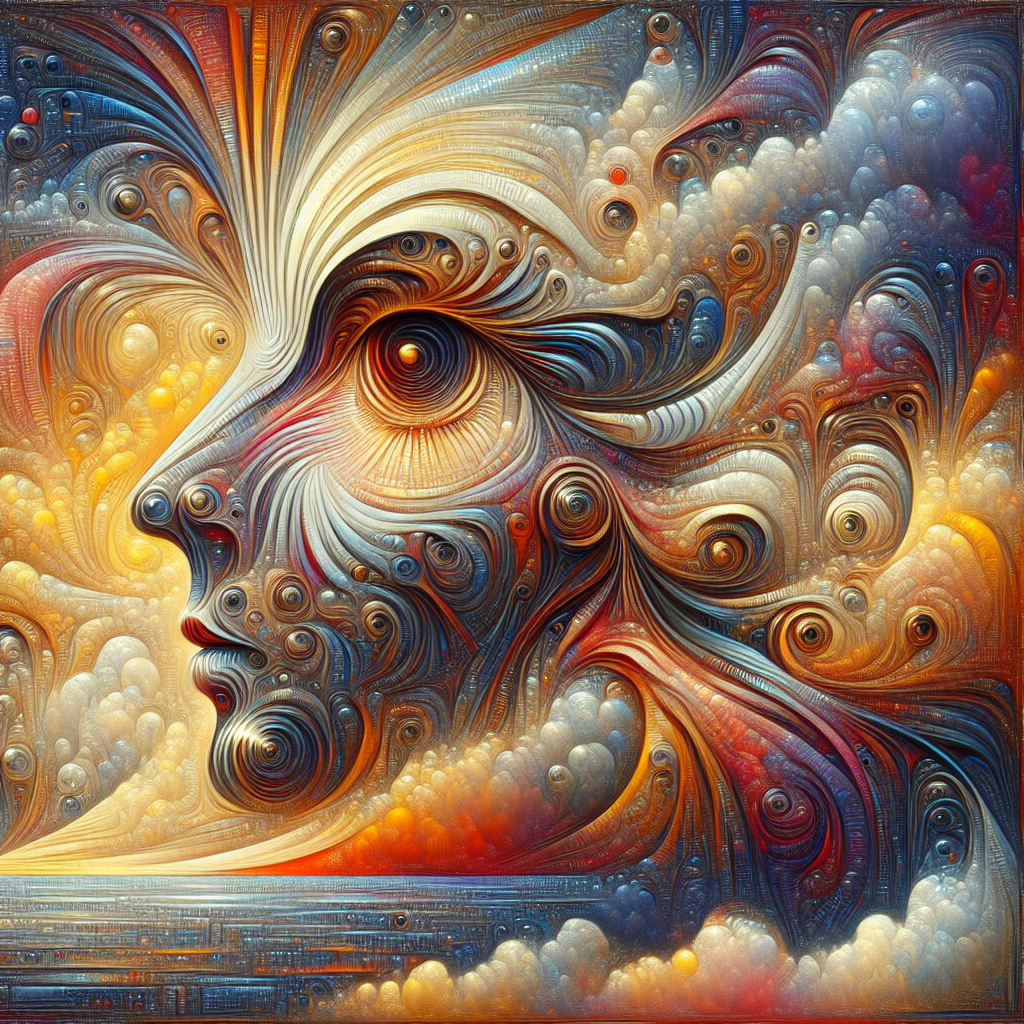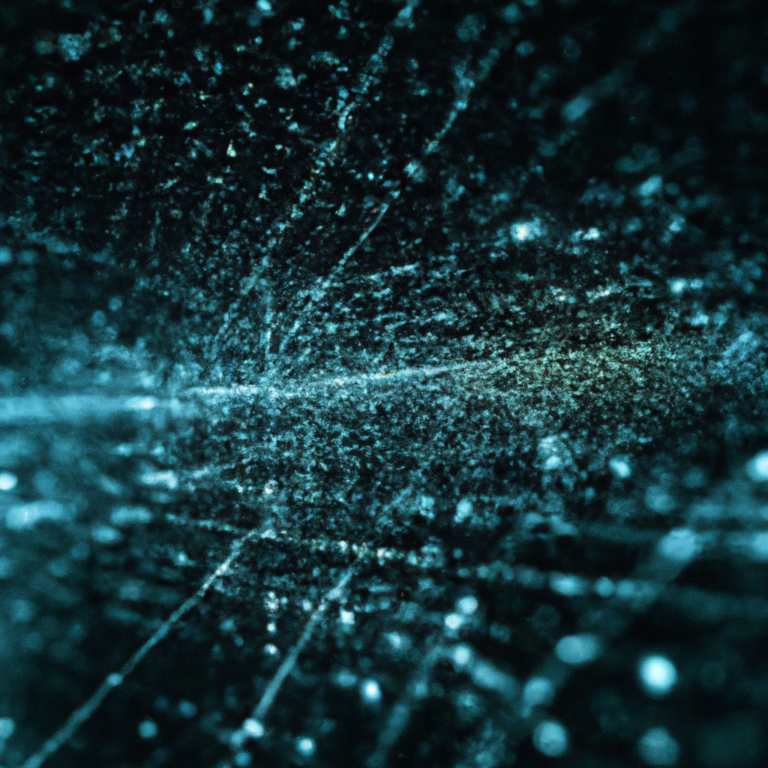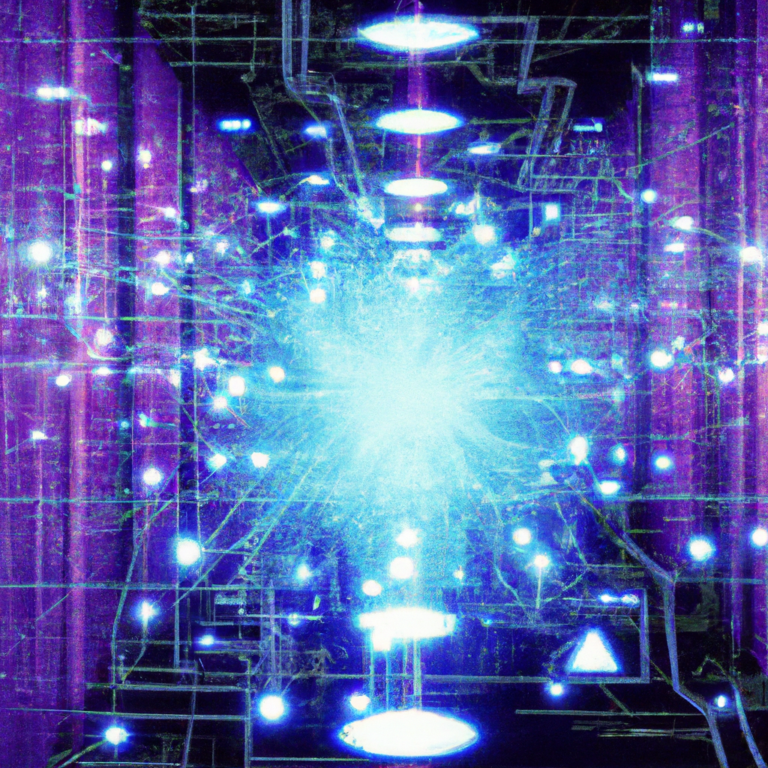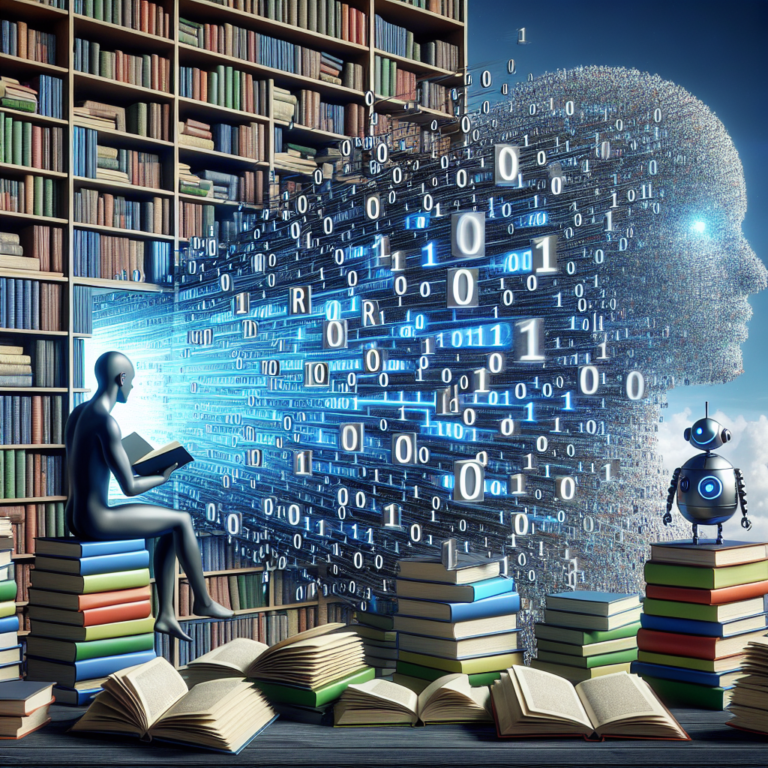
Imagine being able to create an entire digital image just by describing it in words. Well, thanks to a groundbreaking new technology called DALL-E, that previously fanciful notion has become a reality. This revolutionary system has the ability to generate stunning and realistic images based solely on textual descriptions, unleashing infinite creative possibilities. Say goodbye to stock photos and hello to a world where imagination is the only limit. Prepare to be amazed by the power of DALL-E as it takes digital image generation to astonishing new heights.

Understanding DALL-E
The concept of DALL-E
DALL-E, developed by OpenAI, is a groundbreaking AI model that takes image generation to a whole new level. Unlike traditional image generators, DALL-E can create unique and imaginative visual outputs based on textual descriptions. By combining the power of deep learning and natural language processing, DALL-E bridges the gap between words and images, revolutionizing the way we think about creative content generation.
The architecture of DALL-E
At its core, DALL-E is built upon a combination of two key components: a VQ-VAE-2 model and a powerful transformer network. The VQ-VAE-2 model acts as an encoder and decoder, mapping images into a discrete latent space where they can be manipulated and generated. On the other hand, transformers play a crucial role in processing textual prompts and guiding the image generation process. This architecture enables DALL-E to generate highly detailed and coherent images based on specific inputs.
Training data used by DALL-E
To achieve its impressive capabilities, DALL-E requires a massive amount of training data. OpenAI trained this model on a dataset comprised of images from the internet, which were paired with their corresponding textual descriptions. The large-scale dataset allows DALL-E to learn the intricate relationships between specific images and the words used to describe them. By leveraging this data during training, DALL-E becomes increasingly proficient at understanding textual prompts and generating accurate and creative visual outputs.
How DALL-E Works
The process of image generation in DALL-E
When a textual prompt is provided to DALL-E, the model goes through a complex process of converting words into images. Firstly, the prompt is encoded using transformers, allowing DALL-E to understand the semantics and context of the input. Next, the encoded prompt is combined with random noise, which is fed into the VQ-VAE-2 model. This generates an initial image that matches the overall theme or concept of the prompt. The image is then refined through a series of iterations, each time adjusting the latent space representation to align more closely with the desired output. Finally, the refined latent space is decoded to produce the generated image.
The role of the VQ-VAE-2 model in DALL-E
The VQ-VAE-2 model serves as a critical component in the image generation process of DALL-E. It takes the encoded prompt and random noise as input and maps them into a discrete latent space. By discretizing the latent space, the VQ-VAE-2 model enables DALL-E to manipulate and control the generated images more easily. The discrete latent space also allows for efficient storage and retrieval of latent codes, making it possible to explore different variations of a given prompt and generate multiple diverse outputs.
The power of transformers in DALL-E
Transformers play a pivotal role in DALL-E by handling the natural language processing aspect of the model. Through extensive pre-training on massive text corpora, transformers have excelled in understanding the nuances of language and capturing meaningful contextual information. In DALL-E, transformers help encode and process textual prompts, enabling the model to comprehend the desired image characteristics described in the text. By utilizing the power of transformers, DALL-E can generate images that match the provided prompts more accurately, resulting in stunning visual outputs.
DALL-E’s Impressive Capabilities
Creating complex and imaginative images
One of the most remarkable features of DALL-E is its ability to generate complex and imaginative images based on textual prompts. Whether it’s describing fantastical creatures, surreal landscapes, or abstract concepts, DALL-E can bring them to life with astonishing detail. The model’s training on a vast dataset, coupled with its advanced architecture, allows it to produce images that go beyond what traditional image generators can achieve. This capability opens up new avenues for creativity and artistic expression, offering endless possibilities for designers, artists, and content creators.
Translating textual prompts into visual outputs
DALL-E’s unique strength lies in its aptitude for understanding textual descriptions and transforming them into visually coherent outputs. By grasping the semantics and context of the provided prompts, DALL-E can capture the essence of the desired image and faithfully represent it in a generated visual form. This ability makes DALL-E a powerful tool for illustrators, designers, and storytellers, as it enables them to quickly and effortlessly translate their ideas and concepts into stunning visuals without the need for traditional image editing software.
Handling creative requests and constraints
Another impressive capability of DALL-E is its ability to handle creative requests and constraints with ease. By altering the input prompts, artists and designers can guide DALL-E towards specific visual styles or incorporate specific attributes into the generated images. Additionally, users can experiment with different combinations of prompts, allowing them to explore diverse creative possibilities. This flexibility empowers creators to work hand-in-hand with DALL-E as a collaborative partner, expanding their creative horizons and pushing the boundaries of what’s possible in image generation.
Ethical Considerations of DALL-E
Privacy concerns related to image generation
As with any technology that generates visual outputs, privacy concerns can arise when using DALL-E. Since the model was trained on a vast dataset collected from the internet, it’s essential to ensure that any potentially sensitive or private information is not inadvertently encoded in the generated images. OpenAI has taken steps to mitigate this issue by carefully curating and filtering the training data. However, users must also be conscious of the potential privacy implications and use DALL-E responsibly, avoiding the generation of images that may compromise someone’s privacy.
The potential for misuse and misinformation
DALL-E’s ability to generate highly realistic images from textual descriptions opens up possibilities for misuse and the creation of misleading or harmful content. The technology could potentially be exploited to generate deepfake images or manipulate visuals to propagate false narratives. As DALL-E becomes more accessible, it’s vital for both developers and users to be aware of the risks and be proactive in developing safeguards against misuse. Implementing measures such as content verification systems and responsible usage guidelines will be crucial in minimizing the potential for misinformation and harm.
Ensuring responsible use of DALL-E
In light of the ethical considerations surrounding DALL-E, it’s crucial to emphasize the importance of responsible use of this powerful AI tool. OpenAI has taken steps to encourage responsible use by implementing limitations on certain prompts and providing user guidelines. It’s essential for users to be mindful of the potential societal implications of their generated content and to respect privacy, intellectual property, and ethical standards. By using DALL-E in a responsible manner, we can maximize its benefits while minimizing the negative impact it may have on individuals and society as a whole.

Applications of DALL-E
Art and creative industries
DALL-E has the potential to revolutionize the art and creative industries by offering artists and designers a powerful tool for visual expression. With its ability to generate highly detailed and imaginative images based on textual prompts, DALL-E opens up new possibilities for artistic exploration and creative collaboration. Artists can now easily translate their ideas and concepts into stunning visual forms, accelerating the creative process and broadening the range of visual expressions. DALL-E’s influence on the art world is expected to be profound, inspiring new art movements and pushing the boundaries of creativity.
Improving accessibility for visually impaired individuals
DALL-E’s capabilities extend beyond the realm of art and design. By generating images based on textual descriptions, DALL-E has the potential to enhance accessibility for visually impaired individuals. Through a text-to-image conversion process, DALL-E can transform text descriptions into detailed visual representations, allowing visually impaired individuals to better understand and experience visual content. This breakthrough technology opens up a world of possibilities for inclusive design, bridging the gap between the visual and textual realms and promoting equal access to information and creativity.
Accelerating design and prototyping processes
Designers across various industries can benefit greatly from DALL-E’s image generation capabilities. From architecture to fashion, DALL-E has the potential to streamline the design and prototyping processes. By generating visual representations of design ideas based on textual descriptions, DALL-E allows designers to quickly iterate and explore different concepts before committing to physical prototypes. This saves time and resources, enabling designers to bring their visions to life more efficiently. DALL-E’s impact on the design landscape is significant, empowering designers to push the boundaries of innovation and creativity.
Limitations and Challenges
Quality and fidelity of generated images
While DALL-E has demonstrated impressive capabilities, it is not without its limitations. One of the primary challenges is maintaining the quality and fidelity of the generated images. While DALL-E can produce stunning visuals, there are instances where the generated output may not fully match the specificity or level of detail requested in the prompt. As image complexity increases or the desired output becomes more subjective, the fidelity of the generated images may decrease. Addressing this limitation is an ongoing challenge for researchers and developers, as improving the quality of generated images remains a critical area of focus.
Handling abstract or subjective prompts
DALL-E excels at generating images based on concrete and well-defined prompts. However, it faces challenges when dealing with abstract or highly subjective requests. Since the model learns from the patterns and relationships in its training data, it may struggle to understand and accurately represent concepts that are subjective or open to interpretation. The inherent subjectivity of art and design can pose difficulties for DALL-E, as there may be variations in how individuals interpret and visualize certain concepts. Overcoming this limitation requires further advancements in natural language processing and multimodal understanding to enable DALL-E to handle abstract and subjective prompts more effectively.
The lack of interpretability and control
Despite its remarkable image generation capabilities, DALL-E lacks interpretability and granular control. The model operates in a black box manner, making it challenging to understand why certain visual outputs are generated in response to specific prompts. This lack of interpretability can limit the fine-tuning and manipulation of generated images, hindering the creative process for users who seek precise control over the outputs. Future developments in explainable AI and interpretability techniques will be crucial in enhancing DALL-E’s usability and providing users with insights into the inner workings of the model.

Impact on the Creative Landscape
Transforming the way artists and designers work
DALL-E’s impact on the creative landscape cannot be overstated. By providing artists and designers with a powerful tool for image generation, DALL-E transforms the way they work and sparks new creative possibilities. Artists can now generate visual representations of their ideas directly from textual descriptions, revolutionizing the concept ideation process. Designers can iterate and explore different design concepts rapidly, accelerating the design cycle. DALL-E’s ability to bridge the gap between words and images empowers creatives to push the boundaries of their craft, ignite their imagination, and redefine what is possible.
Disrupting traditional design processes
Traditional design processes often rely on iterative cycles of sketching, prototyping, and refining. However, DALL-E disrupts these conventional workflows by introducing a streamlined and efficient approach to generating visual content. Designers can now generate high-quality visual outputs directly from textual prompts, bypassing the need for manual sketches or initial prototypes. This acceleration of the design process can lead to increased productivity, improved collaboration between team members, and ultimately, more innovative and visually striking designs.
The potential for automated content generation
With DALL-E’s capabilities continuously improving, the potential for automated content generation becomes increasingly evident. As the technology advances, there may come a time when DALL-E can autonomously generate vast amounts of visual content based on textual inputs. This automation can have wide-ranging applications, from aiding in content creation for social media platforms to supporting design agencies in producing large volumes of graphics. However, careful consideration must be given to the ethical implications and the need to ensure responsible use to prevent the proliferation of low-quality or misleading content.
Future Developments of DALL-E
Improving image quality and fidelity
Continuous advancements in deep learning and AI research will drive improvements in the quality and fidelity of the images generated by DALL-E. Researchers will explore novel techniques to enhance visual coherence, smoothness, and realism in the generated outputs. By refining the mapping between textual prompts and visual representations, future iterations of DALL-E will strive to produce images that match human-level perception and surpass the limitations of current generative models.
Enhancing the interpretability and control of generated images
Addressing the lack of interpretability and control in DALL-E will be a focus of future developments. Researchers will endeavor to unlock the black box of the model, enabling users to gain insights into the decision-making process of the model and providing mechanisms for fine-tuning generated outputs. This enhanced control will empower users to mold the generated images more precisely and align them with their creative vision.
Potential integration with other AI models
DALL-E’s capabilities can be further augmented through integration with other AI models and technologies. Combining DALL-E with complementary models, such as OpenAI’s GPT-3, can lead to more interactive and versatile image generation systems. Additionally, incorporating advances in computer vision and multimodal AI systems can enable DALL-E to process diverse inputs, including audio or video, and generate corresponding visual outputs. These integrations will unlock new dimensions of creativity and expand DALL-E’s applications beyond the realm of textual prompts.

Related Technologies and Projects
OpenAI’s GPT-3 and its connection to DALL-E
OpenAI’s GPT-3, another remarkable AI model, shares a connection with DALL-E through their common foundation of transformers. While DALL-E focuses on image generation, GPT-3 excels in natural language processing and understanding. The integration of these two models holds enormous potential for multimodal AI systems, where both textual and visual inputs can be processed and generated seamlessly. The synergy between GPT-3 and DALL-E can pave the way for even more sophisticated and interactive content generation tools, transforming the way we communicate and create.
Other image generation models and approaches
While DALL-E stands out with its unique approach to image generation, it is not the only player in the field. Multiple other image generation models and approaches have emerged, each with its own strengths and limitations. Models like StyleGAN and VQ-VAE have made significant contributions to the field, offering alternative paths to generating realistic and diverse images. These models, along with the advancements in generative adversarial networks (GANs), continue to push the boundaries of image generation research, fostering healthy competition and driving innovation in the field.
Research on multimodal AI systems
The field of multimodal AI, which focuses on the integration of multiple modalities such as language, vision, and audio, is closely related to the advancements made by DALL-E. Researchers are actively exploring the intersection of these modalities, aiming to develop AI systems that can process and generate content in a multimodal context. Projects such as OpenAI’s CLIP, which combines vision and language understanding, pave the way for more sophisticated multimodal AI systems that can generate visual outputs based on diverse inputs. This research holds great promise for the future of content generation and interaction with AI systems.
Conclusion
The advent of DALL-E has ushered in a new era of image generation, where textual descriptions can be transformed into visually compelling outputs. By combining advanced deep learning techniques and natural language processing, DALL-E has reimagined the creative landscape, empowering artists, designers, and content creators to bring their ideas to life with unprecedented ease and imagination.
While DALL-E showcases impressive capabilities, it also comes with ethical considerations that must be addressed to ensure responsible use. Privacy concerns, the potential for misuse, and the lack of interpretability and control require ongoing attention and proactive measures.
Looking ahead, the continued development of DALL-E holds exciting prospects. Improvements in image quality, enhanced interpretability and control, and integration with other AI models will unlock new dimensions of creativity and enhance the user experience. The future of DALL-E lies not only in its evolution as a powerful content generation tool but also in its potential to shape the way we interact with AI systems and redefine the boundaries of creativity in the digital age.






